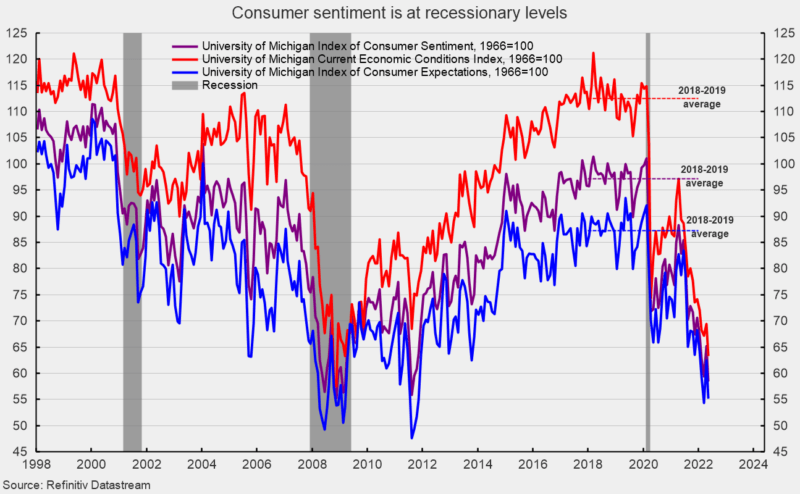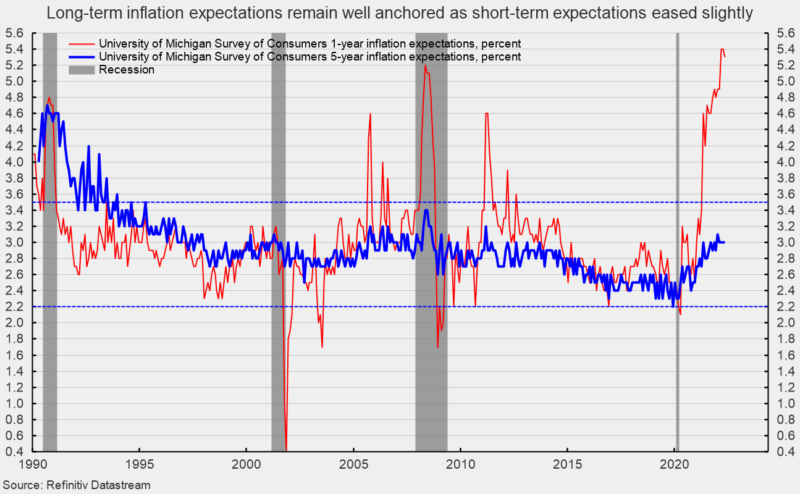Inflation Fears and Declining Buying Conditions Extend the May Drop in Consumer Sentiment
The final May results from the University of Michigan Surveys of Consumers show overall consumer sentiment continued to fall in the latter part of May. The composite consumer sentiment decreased to 58.4 in May, down from 59.1 in mid-May and 65.2 in April. The final May result is a drop of 6.8 points or 10.4 percent. The index is now down 42.6 points from the February 2020 result and at the lowest level since August 2011 (see first chart).
Both component indexes posted declines. The current-economic-conditions index fell to 63.3 from 69.4 in April (see first chart). That is a 6.1-point or 10.0 percent decrease for the month and leaves the index with a 51.5-point drop since February 2020 and puts the index at its lowest level since March 2009.
The second sub-index — that of consumer expectations, one of the AIER leading indicators — lost 7.3 points or 11.7 percent for the month, dropping to 55.2 (see first chart). The index is off 36.9 points since February 2020 and is at the second-lowest level since November 2011.
All three indexes are near or below the lows seen in four of the last six recessions.
According to the report, “This recent drop was largely driven by continued negative views on current buying conditions for houses and durables, as well as consumers’ future outlook for the economy, primarily due to concerns over inflation.” However, the report adds, “At the same time, consumers expressed less pessimism over future prospects for their personal finances than over future business conditions. Less than one quarter of consumers expected to be worse off financially a year from now.” Furthermore, the report states, “Looking into the long term, a majority of consumers expected their financial situation to improve over the next five years; this share is essentially unchanged during 2022. The report’s take-away, “A stable outlook for personal finances may currently support consumer spending. Still, persistently negative views of the economy may come to dominate personal factors in influencing consumer behavior in the future.”
The one-year inflation expectations ticked down slightly to 5.3 percent in May, down from 5.4 percent in April. The one-year expectations has spiked above 3.5 percent several times since 2005 only to fall back (see second chart). The five-year inflation expectations remained unchanged at 3.0 percent in May. That result remains well within the 25-year range of 2.2 percent to 3.5 percent (see second chart).
The weakening trend in consumer attitudes reflects a confluence of events with inflation leading the pack. Persistent elevated price increases affect consumer and business decision-making and distort economic activity. Overall, economic risks remain elevated due to the impact of inflation, the start of a Fed tightening cycle, the Russian invasion of Ukraine, and renewed lockdowns in China. The ramping of negative political ads as the midterm elections approach may also weigh on consumer sentiment in coming months. The overall economic outlook remains highly uncertain.







